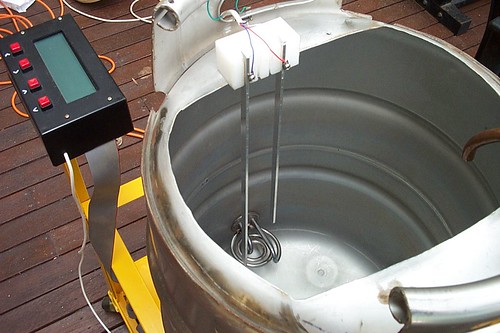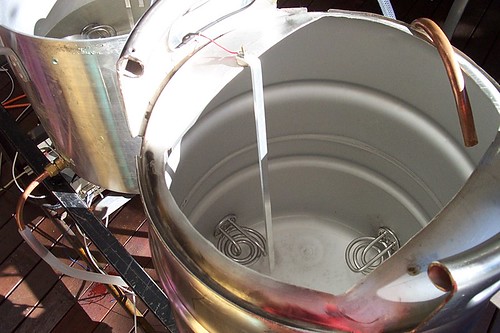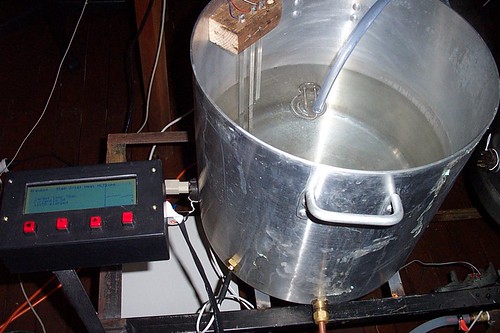Through calibration, I know how long to switch the solenoid on to get the volume I want. It is part of how I get my system to autostart whilst I am still sleeping or otherwise occupied;
http://www.aussiehomebrewer.com/forum/inde...st&p=433700
It is also possible to manually fill the HLT the night before with only the volume of water needed for dough in and empty that at a preset time. This is the technique I am trialling on the weekend;
One timer to start the mill motor and open the solenoid and turn it off some time later and another to start the mash cycle (pump and heat exchanger)
going a little OT;
The system ramps and soaks from 20degC to mash out using the heat exchanger, so there is no great importance on strike or sparge water temperature for me. My heat exchanger is quite efficient at changing mash temperatures and really negates the need for a HLT.
I don't see a problem with the mash returning to 60-70 deg during sparge and then recirculating to mash out temperature. The enzymes should be mostly denatured during the first mash out.
http://www.aussiehomebrewer.com/forum/inde...st&p=433700
It is also possible to manually fill the HLT the night before with only the volume of water needed for dough in and empty that at a preset time. This is the technique I am trialling on the weekend;
One timer to start the mill motor and open the solenoid and turn it off some time later and another to start the mash cycle (pump and heat exchanger)
going a little OT;
The system ramps and soaks from 20degC to mash out using the heat exchanger, so there is no great importance on strike or sparge water temperature for me. My heat exchanger is quite efficient at changing mash temperatures and really negates the need for a HLT.
I don't see a problem with the mash returning to 60-70 deg during sparge and then recirculating to mash out temperature. The enzymes should be mostly denatured during the first mash out.








